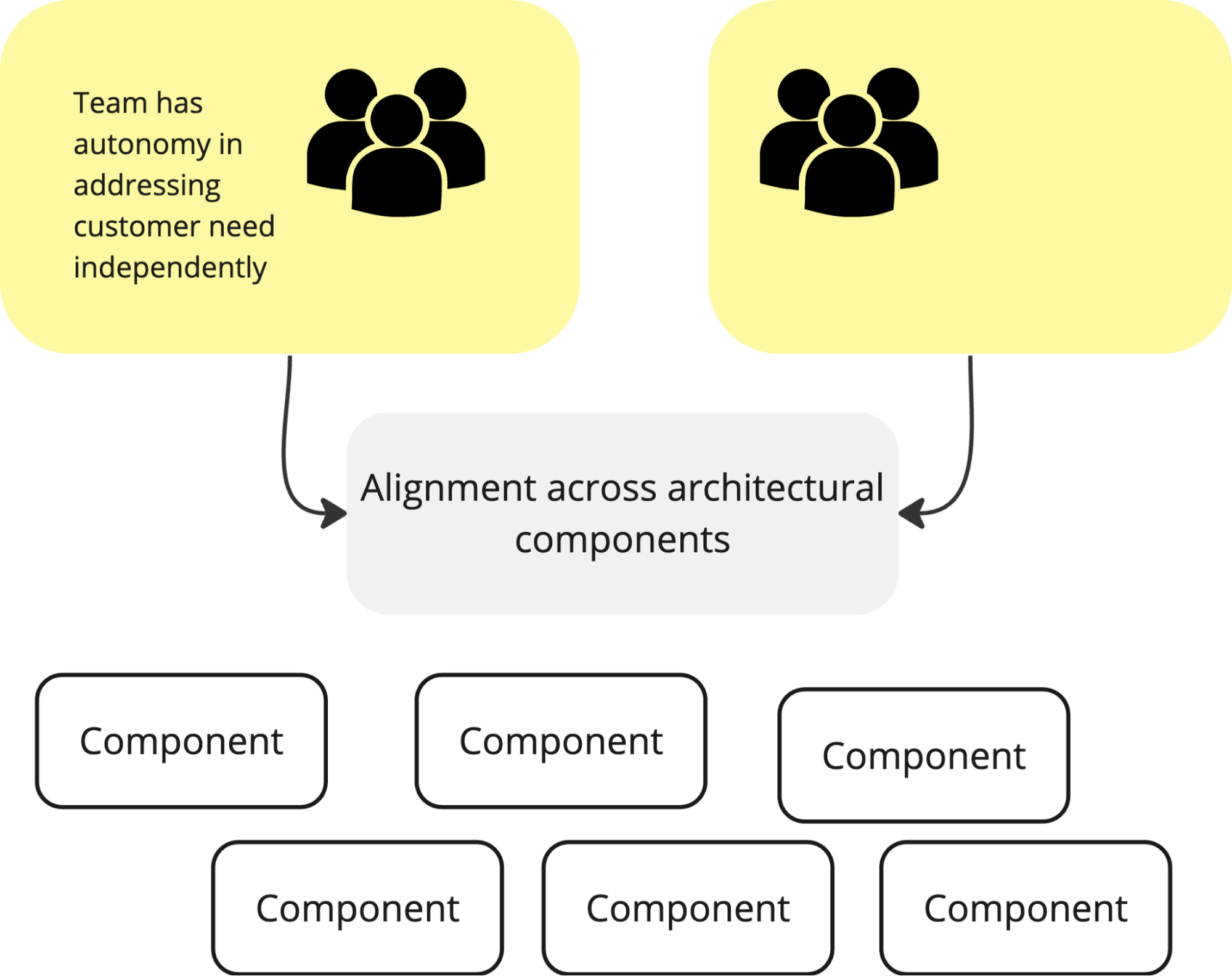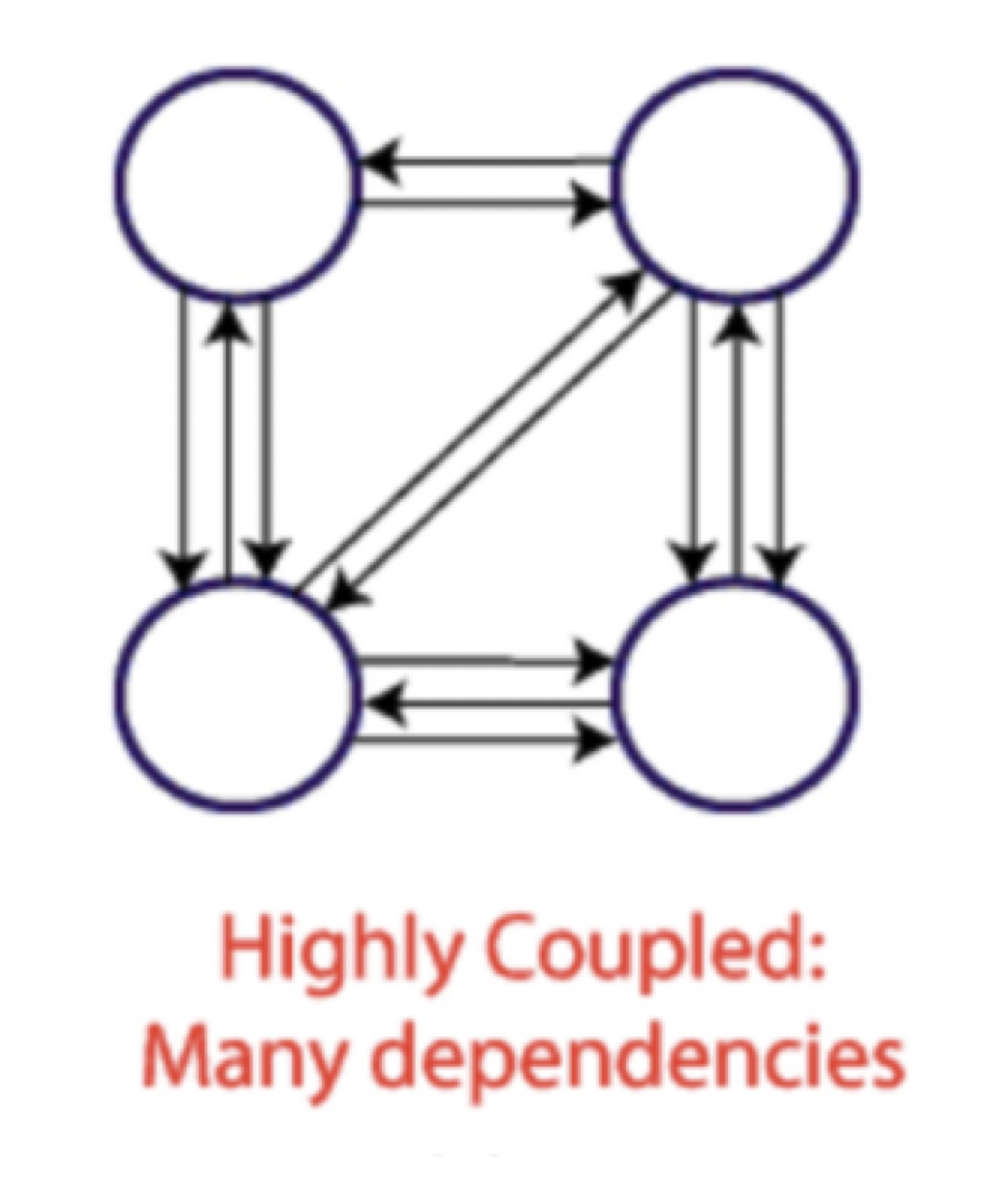High Autonomy Solving Customer Problems
In contrast to the first model, the second organizational paradigm emphasizes granting teams the autonomy to address customer needs directly. This shift marks a significant departure from traditional structures, placing customer value at the core of every initiative.

In this model, while teams are free to innovate and solve customer problems uniquely, there's a concerted effort to align the building and developmental strategies across the organization. Such alignment is crucial, ensuring the overarching architectural and development standards remain consistent. Diluting ownership over technical specifics in favor of a unified focus on customer outcomes aims to create a more agile and responsive organization, where the ultimate measure of success is delivering value to the customer rather than adherence to technical preferences.
Nicolay Worren describes this approach as exhibiting “tight coupling.” In tightly coupled structures, the interdependencies between units are significant—changes in one unit can immediately affect others. The primary advantage here is the unwavering concentration on delivering customer value, with the entire organization aligned toward this common goal.

In short, in such an organizational design, there is a high level of alignment across teams and a lower level of single-team autonomy.